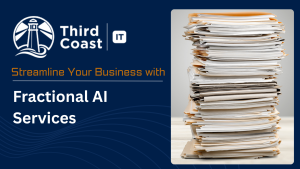Is your business ready for the upcoming changes in the tech landscape? With the Windows 10 phase out on the horizon—due to Microsoft’s decision to focus on developing and supporting newer operating systems—it is essential to start preparing now to avoid disruptions to your operations. Below is a detailed checklist, including key considerations and budgeting strategies to ensure a smooth transition for your business.
1. Assess Hardware and Software Compatibility
Before proceeding with the upgrade, assessing whether your current software and hardware are compatible with Windows 11 is crucial. Check Microsoft’s system requirements to determine if your computers meet the specifications.
Remember to test your business-critical applications for compatibility issues. These are essential for your daily operations and productivity, so you want to ensure you don’t experience any interruptions, which could lead to loss of profit.
If you do not plan ahead, hardware will become harder to source and more expensive during the pinnacle of the phase out period. Many businesses will not have had the foresight you have now to upgrade the appropriate devices now while they are more readily available – you can easily avoid these increased costs by reviewing your plan now!
2. Plan for Data Backup and Security
Protecting your data should be a top priority during any system upgrade. Develop a comprehensive data backup plan to safeguard your customer data, financial records, and any other critical business information in case of unforeseen issues.
In addition, ensure all Windows 10 machines have the latest security patches to reduce vulnerabilities.
3. Develop a Deployment Strategy
Consider implementing a phased rollout approach for the Windows 11 upgrade to minimize disruptions. This approach involves starting with a pilot group of machines to identify and address any issues before proceeding with a broader deployment. Doing so allows you to gradually transition your systems, allowing for early issue detection and resolution and minimizing the impact on your operations.
Utilize deployment tools like Microsoft Endpoint Manager to streamline the upgrade process across your network.
4. Provide User Training During Windows 10 Phase Out
Transitioning to a new operating system doesn’t have to be daunting for your employees. Offer training sessions to familiarize users with Windows 11’s new features and interface. Providing adequate training can reduce user confusion and ensure your team is confident using the new system.
5. Establish Support Resources
Even with thorough training, users may encounter questions or issues after the upgrade. Have a support plan in place to address any concerns promptly. Provide users with the necessary support to seamlessly navigate the transition, whether through a dedicated help desk or online resources.
6. Consider Costs
Upgrading to Windows 11 involves various costs, including licensing fees, potential hardware upgrades, and training expenses. Calculate the upgrade’s financial impact on your company with a total cost study.
You can prevent unanticipated financial strain by ensuring you know exactly what software and hardware your business will need to acquire now. Ensure your budget stays up to date to accommodate the Windows 10 phase out.
7. Evaluate the Windows 11 Lifecycle
Research the support lifecycle for Microsoft Windows to understand how long Microsoft will provide security updates and compatibility with future software versions. This information will help you make informed decisions about the timing of your upgrade and ensure ongoing support for your systems.
The Microsoft Windows lifecycle typically includes a period of mainstream support, during which Microsoft provides regular updates and support, followed by an extended support period, during which only critical updates and security patches are released.
8. Plan for Continued Maintenance
Once the upgrade and Windows 10 phase out is complete, the work does not stop there—plan for ongoing maintenance and monitoring to keep your systems running smoothly. Check for updates and patches regularly to keep your business current and any security measures up-to-date.
9. Stay Informed About Future Developments
The tech landscape constantly evolves, and staying informed about future developments is crucial for business success. Monitor industry trends and Microsoft announcements to anticipate changes that may impact your IT strategy.
10. Partner with Third Coast IT for Expert Guidance
Navigating the Windows 10 phase-out and upgrade process can be complex, but you do not have to do it alone. Partner with Third Coast IT for expert guidance and support every step of the way. From assessing compatibility to developing a deployment strategy, we are here to provide you with the support you need to transition to Windows 11 seamlessly.
Don’t delay thinking about this phase out! Start your business’s Windows 10 phase out preparations immediately to ensure a seamless transition for your organization. Delaying the transition could lead to potential security risks, compatibility issues with newer software, and increased costs due to emergency upgrades.



